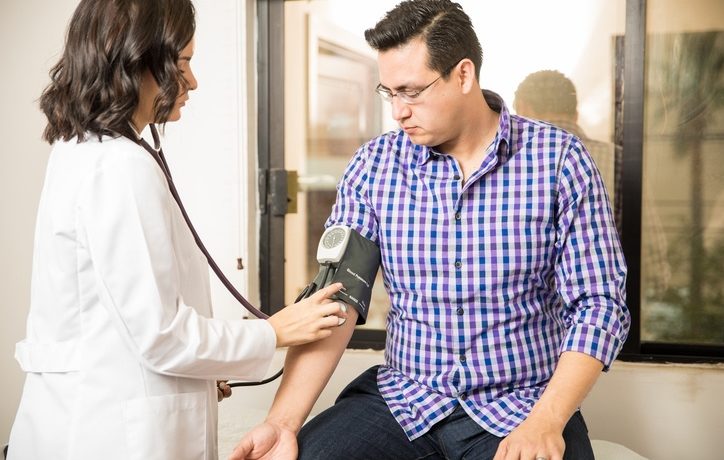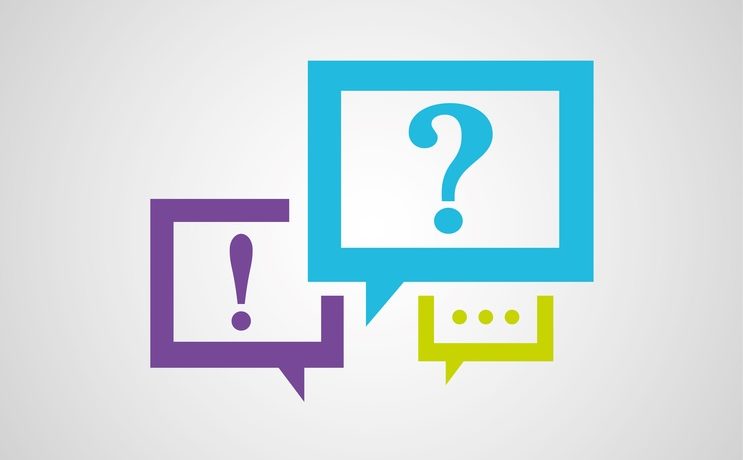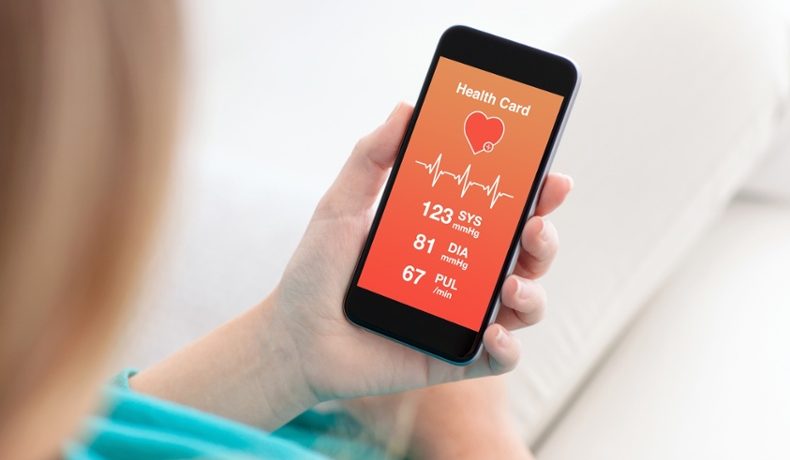patient interaction
10 Ways to Form a Lifelong Patient Care Partnership

Like any relationship, the patient care partnership is founded on communication. At base, as explained on Nursetogether.com, senders communicate messages to receivers, but clinicians are often under intense stress that weakens relationships. The following pointers can help overcome that stress and ensure high-quality care through strong partnerships.
1. Focus on Patients
As shown on the Health Affairs Blog, patient-centered care works to improve outcomes and satisfaction through strong patient care partnerships. Therefore, health care team members use clear and empathetic communication to provide support across various settings. In the process, they work to equip patients with the skills to prevent and manage illness on their own.
2. Center Relationships
Impersonal institutional culture can lead practitioners to ignore patient care partnerships. However, Goold and Lipkin noted that it is key to managing data, diagnoses, plans, and compliance. So, center relationships and increase patient comfort by getting to know them, their families, and their interests.
3. Set the Agenda
As Henbest and Stewart shows, centering patients orients healthcare around their specific concerns. In particular, practitioners should start by having patients list their issues and then collaborate on an agenda from most to least important. At that point, the two of you can create a plan of action together.
4. Listen Carefully
Reflective listening builds on the directed attention of active listening. Care providers specifically listen without interrupting and then reflect patients’ concerns back to them. Allowing people to tell their story will help you obtain information and, as shown by Clark et al. improve outcomes, behavior, and patient satisfaction.
5. Be Mindful
Communication’s increasing complexity can put heavy demands on providers’ attention, making it difficult to be conscientious in one’s work. On the other hand, mindfulness – or being fully present in one’s practice – can prevent errors and relieve stress for patients and practitioners, as Hutchinson and Dobkin demonstrate in their research.
6. Manage Emotions
Managing emotions is one of the most valuable communication skills when dealing with the difficult situations of modern healthcare. Kim et al. highlight empathy’s role in boosting trust, compliance, and satisfaction. Team members should thus identify, acknowledge, and respectfully address emotions.
7. Educate
For help in decision-making, patients require an understanding of treatments, consequences, and steps in healing. You should provide websites, reading materials, videos, and other resources to help patients learn more. As shown on the Health Affairs Blog, education generally reduces re-admission while raising moral support and mental stability.
8. Increase Access
Information technology provides one way to minimize wait times and otherwise boost health care efficiency. For instance, electronic health records give patients greater access to their health goals, needs, values, and preferences. As noted on Medscape, such technology challenges the physician’s traditional role and nurtures the patient care partnership.
9. Improve Facilities
Greene et al noted that medical facilities should be improved. From medical jargon used in signs to nurses’ stations that are situated oddly far from patients, these buildings are fundamentally designed around clinicians’ needs alone. Centering such spaces around patients can help create more empathetic environments that help patients feel involved in their health care.
10. Get Feedback
Providing and receiving feedback are reassuring activities, as shown in a study from Perspectives on Medical Education. Many clinicians survey patients and use the results to improve their communication and behavior. Such surveys also help patients trust their providers and feel more involved in their health.
With consistent practice, these tips can strengthen a patient care partnership – and improve care quality, safety, and efficiency. In the process, both sides of this partnership will better endure – and to improve the conditions of modern medicine.
—
Did you like reading this article? Subscribe!
![]()
3 Little Known Physician Patient Communication Tactics

Good communication with your patients requires that you both recognize their expertise in their own health and respond to them with empathy. Patient-centered care like this may not always be easy, as shown by Marvel et al.’s finding that 90 percent of complaints about physicians relate to their communication style. Yet, the important yet lesser-known physician patient tactics of slowing down, appreciating patient world view, and having patients summarize discussion lead to significant improvements in clinical outcomes and overall patient satisfaction.
1. Slow Down
Marvel et al.’s research also revealed that physicians who communicate at a slow and deliberate pace are better understood by patients, especially when it comes to new information. Yet, on average, medical professionals only wait around 20 seconds before interrupting an individual’s initial description of their problems. To prevent missing information, you should use the following physician patient communication tactics:
- Pause frequently to allow listeners to form questions,
- Replace long monologues with short, customized explanations,
- Reinforce silences with open body language,
- And use questions and dialogue to check patient understanding.
In the process, be sure to tailor provided information to each patient, as, for instance, 20 to 40 percent of individuals 60 to 80 years old surveyed by the US Census never finished high school. The information that you gain will help you learn more about each person, adapt information to their needs, and improve their comprehension, all while minimizing emotional distress.
2. Engage with Beliefs
Physicians rely upon a biomedical perspective, but patients use cultural beliefs and personal values for decision-making. As a result, Ha and Longnecker note that providers confront distrust, competing therapies, or even lack of agreement to treatment. However, the best solution is to develop their cultural competency. In particular, the following physician patient communication tactics ensure collaboration, especially when dealing with cultural or language-based divides.
- Describe a problem medically and ask the patient to summarize it in order to reveal their bias,
- Recognize and respect patient world views, including values, beliefs, and expectations,
- Assess language fluency and world view to help adapt your communication methods,
- Be aware of your own cultural and personal biases and beliefs,
- Lastly, customize care to align with patients’ standards.
From there, you can identify and resolve potential barriers to communication and treatment alike. As Platt and Keating have shown in research on urinary tract infections, such an approach will improve adherence to the care plan, even as it reduces recurrence over time.
3. Close the Loop
Research from the American Academy of Family Physicians shows that half of all patients leave their doctor’s office having misunderstood something. In large part, this is due to the limited amount of time allotted for communication. Although this problem is unavoidable, a technique called “closing the loop” can help prevent it. In particular, this method involves the following:
- Start a dialogue about each of your top priorities,
- Then, alternate asking and telling to assess their knowledge,
- Evaluate how prepared they are for their stated goals,
- Next, set realistic, manageable, and measurable goals,
- Last, close the loop by having them repeat what was discussed.
These physician patient communication tactics make it possible to quickly and carefully communicate with patients by setting a clear agenda. Furthermore, closing the loop by having them verbalize their understanding gives you the chance to correct misunderstandings.
The above physician patient communication tactics may be less well-known than some like active listening. Yet, they are just as powerful in ensuring the clarity of your explanations of problems and related treatments. Furthermore, avoiding misunderstandings ensures a high quality of care, which will, in turn, raise patient quality of life.
—
Would you like to read more blogs like this one? Subscribe!
![]()
5 Tips for Dealing with Patients with Opioid Dependence

It’s a national epidemic that is wreaking havoc on people from all walks of life, their families and, yes, physicians.
It’s opioid dependence, and sooner or later it is likely to touch your professional life if it hasn’t already.
According to the American Society of Addiction Medicine, nearly 2.5 million Americans had a substance use disorder involving opioids in 2014. In addition, the Substance Abuse and Mental Health Services Administration reports that the number of Americans who say they have engaged in non-medical use of prescription painkillers–thus putting themselves at risk for opioid dependence–each month totals 4.3 million.
Yes, sooner or later you are likely to be faced with patients in the throws of opioid dependence. They will present a variety of challenges, according to the National Center for Biotechnology Information, including psychological symptoms, physical symptoms and concerns about effectively managing pain.
For these reasons, it can be difficult for physicians to diagnose, treat and support patients in the throes of opioid dependence.
Here are five tips to assist you:
1. Acknowledge the dependence
Getting your patient to acknowledge the opioid dependence is a critical first step for several reasons. It allows you to treat the patient with a greater level of precision. It gives you peace of mind that the treatment decisions you will make are more likely to be effective and less likely to do more harm to your patient. In addition, it allows you to treat both the addiction or dependence as well as the condition that brought the patient to you in the first place.
2. Be aware of withdrawal
Patients who are dependent on opioids can be incredibly challenging to treat. They can be moody, mean and even menacing. This often results in physicians feeling like they would rather call a psychiatrist to deal with the patient. Obviously that’s not a practical solution–nor is it legal. That’s why it’s important for physicians to be aware of withdrawal symptoms and be as sympathetic to the patients as possible.
3. Don’t fret about the dependence
Patients who are opioid dependent rarely get effective pain relief from the dose of opioid they have been abusing. This presents challenges to physicians who are charged with treating the patients’ acute pain. In fact, it can often lead to physicians under-treating patients because they don’t want to make a patient’s opioid dependence worse. Rather than fretting about the dependence, physicians should treat the acute pain immediately–and then address the dependence at a later time (according to an article published on the National Center for Biotechnology Information website).
4. Stay up-to-date on the latest treatment options
In May 2016, the U.S. Food and Drug Administration approved the very first buprenorphine implant to help patients suffering from opioid dependence. It’s called Probuphine and it’s designed to provide a constant, low-level dose of buprenorphine to patients for up to half a year. It’s believed to be effective–but only if physicians are aware of it and use it. One of the best things you can do to treat your patients who are suffering from opioid dependence is to stay up-to-date on the latest treatments so you can offer them to your patients.
5. Bring in an addiction medicine specialist
Many of your opioid-dependent patients will need behavioral therapy as much as they’ll need treatment for their physical ailments. Don’t be afraid to bring in an addiction specialist to advise you and help your patients. Doing so could mean the difference between seeing your patient become part of the growing number of those who are addicted to opioids and those who recover.
—
Did you enjoy this article? Would you like to read more like it? If so, subscribe to receive our blogs.
![]()
The Relationship Between Mobile Healthcare Apps and Physician Visits

The internet has changed everything. It wasn’t that long ago when patients relied exclusively on physicians for healthcare advice, diagnosis and treatment. Today, however, an increasing and alarming number of people are turning to mobile healthcare apps for healthcare expertise.
And it could be dangerous.
According to the fourth annual study on mHealth app publishing conducted by Research2Guidance, there are currently more than 100,000 healthcare apps available to both Apple and Android users. According to the study’s authors, it’s estimated that 1.5 billion people around the world will have downloaded a healthcare app by 2018.
Many of those who use mobile healthcare apps cite convenience as their top reason for turning to their smartphones for healthcare information. They like having access to their medical records, the ability to make appointments with the swipe of a finger and the plethora of information about medication, symptoms and preferred treatments. Others use mobile healthcare apps to track their diets, exercise habits and sleep. Most people consider mobile healthcare apps to be incredibly useful.
Physicians, however, should be wary of the way their patients use the apps.
One study published in 2013 found that the average American spent about an hour online each week searching for healthcare information. While many search for general information about allergies and treating the common cold, others seek information related much more serious conditions—and then accepted what they found online as undisputed healthcare truth.
The result, according to research conducted by the Pew Research Center, is that only about half of all the people who looked for and found healthcare information online actually followed up with their physicians.
This trend puts both patients and physicians in precarious positions.
While people are increasingly using and trusting mobile healthcare apps, their faith in physicians is in a downward spiral. A recent study found that only about 23 percent of Americans have “a great deal” of confidence in the country’s healthcare system, and a disappointing 58 percent say that doctors can be trusted.
The challenge for physicians is to embrace the fact that mobile healthcare apps are not going away and find a way to help their patients understand how to use them effectively, without doing harm. In other words, physicians need to leverage the power of the internet to engage patients in their care and treatment plans. Here’s how:
Educate
As with any app, there are those mobile healthcare apps that are reliable and there are those that should not be trusted. For this reason, it is important that physicians familiarize themselves with apps that are both useful and accurate—and then share those apps with patients.
At the very least, physicians will know from which sources their patients are getting their information, which is the first step towards ensuring that patients are not taking bad advice.
Engage
Patients are increasingly being asked and expected to take more responsibility for their health and care. Hence, they many turn to apps for information.
Physicians can leverage this trend by encouraging patients to share information about their use of mobile healthcare apps during office visits. Engaging patients in honest, authentic conversations about online information—whether treatment options or ways to deal with symptoms—can actually lead to more accurate diagnoses and care that is more personalized.
Embrace
Many apps can actually make physicians’ lives easier. They assist with the scheduling of office visits, provide patients with access to their medical records and allow patients to ask questions.
Physicians should identify the apps that make the most sense to their practices and embrace them. Patients are using apps anyway, so physicians should use them to their advantage, too.
—
Did you like this article? If you’d like to read others like it, subscribe to our blog!
![]()
5 Ways Physicians Can Improve Family and Patient Engagement

Physicians and patients alike face increasing pressures with regard to care. Doctors can be pessimistic about their field due to rising demands and over 40% of patients take on health risks due to unclear communication. The main problem is a focus on single encounters between patients and clinicians which contributes to over-spending in healthcare without clear benefits. Patient engagement in healthcare helps by focusing on collaboration among patients, family, clinicians, and staff. In particular, it combines consumer, healthcare, and patient and family engagement through the integration of each across all levels and settings of care. Through the following tips, a patient can take center stage as a full participant in their health, leading to better outcomes and lower costs.
Put Knowledge in Patients’ Hands
Sharing information is the most basic and most important step, and it starts by providing all details needed to make healthcare decisions. Explain the diagnosis using transparent language and specific data, share educational materials, and discuss potential next steps or treatment options. Keeping patients in the loop will help them feel empowered, resulting in better adherence to recommendations and higher rates of behavior change in areas like exercise and diet.
Engage Family in Care
Another key step in patient engagement in healthcare is welcoming family members as active participants in care. In fact, their questions and concerns will help you and your patient ensure productive and meaningful visits. They can also act as advisors or collaborative partners in developing and revising the plan for care. A level of nurturing family involvement will support patient well-being and provide a resource for ample input and feedback.
Listen as a Form of Support
Given that the average generalist conducts around 150,000 interviews over their career, communication is central to engagement. So, begin each visit by inquiring about patient and family needs; then, use open-ended questions and listening behavior like eye contact and body language to engage with patients and family members. During discussions, enable patient memory and clarity by talking at their level, summarizing talking points, clarifying statements, and inviting questions and dialogue. The results speak for themselves, as comprehension and satisfaction increase among patients when doctors lean forward and directly face them.
Target Communication and Care
Marketing is a less obvious step for patient engagement in healthcare, but targeting current and potential customers is essential to establishing trust. In particular, physicians can ensure satisfaction through ongoing content like blogs or newsletters with accurate and timely communication through multiple channels including follow-up and reminder e-mails. A web portal also ensures convenient tracking of visits, treatment, billing, and correspondence with the potential for open records and scheduling, which 82% of patients prefer.
Personalize Medical Care
Another approach is personalized medicine, which frames physicians and patients as partners in care. Although it limits the number of patients and relies on annual dues, this model ensures financial stability for clinicians and easier access to care for patients. In particular, collaboration among clinicians enables greater coordination of care and resulting conveniences for patients like same-day appointments. With better results and patient accountability, personalized medicine has satisfaction rates of 94% among patients and 95% among doctors.
With these tips in mind, patient engagement starts by considering the current state of your practice and how to move forward. Fundamentally, improving the relationship between physicians and patients results in better adherence to care and long-term higher quality of life, with decreased hospital visits, morbidity, and mortality. Ensuring that patients and their families are full participants in healthcare is definitely a powerful shift in the right direction.
—
Did you enjoy this article? If you subscribe to our blog, we can share more content with you.
![]()
How to Effectively Manage Patients That Are Under the Influence

Substance abuse is an insidious public health problem in the United States. It’s costs to society are measured in both billions of dollars and thousands of lives lost.
It also directly affects physicians, who frequently find themselves on the front lines of the battle against drug and alcohol abuse.
According to the National Institute on Drug Abuse, the health care costs of alcohol and illicit drugs totals more than $35 billion annually. The Centers for Medicare & Medicaid Services reports that more than 45,000 people die from drug overdoses each year and another 29,000 deaths are alcohol induced.
Many of these people present to emergency departments and appointments while they are under the influence.
Patients with substance abuse problems and are under the influence are particularly vexing for physicians. They raise questions related to informed consent, standards of care, and the safety and security of hospital staff as well as other patients.
Here is a look at how to effectively manage patients that are under the influence:
Address Safety Issues
Patients who are under the influence have been known to spit, punch and kick physicians, nurses, staff and even other patients. They can be belligerent, noisy and difficult to assess. Their mere presence can elevate the stress level of everyone in the hospital or clinic.
The first thing you should do when a patient appears to be under the influence is take steps to keep yourself, your staff and other patients safe.
Because most healthcare professionals will rightfully feel obligated to try to at least assess the patient’s condition, steps should be taken to do this as safely as possible. Separating the patient may be an option. However, it may be necessary to call security or local law enforcement if the patient refuses to cooperate and continues to be disruptive.
In cases where treating the patient is absolutely necessary, it may be appropriate to restrain the patient physically or with medication.
Reschedule, if Possible
Generally speaking, patients who are under the influence of drugs or alcohol should have their appointments rescheduled if their condition is stable. Rescheduling is not always an option, and should be the course of action only after an appropriate assessment has been completed.
Rescheduling reduces your liability, helps protect your staff and ensures that any treatments are properly prescribed. It also provides an opportunity for you to educate the patient about the impact substance abuse has on their health–as well as your ability to provide care.
Of course, if the patient is in the throes of an acute medical situation, you should follow the practices outlined in your organization’s standard of care policy.
Discuss and Document
To determine whether or not an appointment can be rescheduled, it will be necessary to discuss the situation with your patient. Document the current situation and any history of substance abuse. Make sure to take into consideration the patient’s ability to provide accurate information.
Discussing the situation with your patient and documenting the interaction will both help you determine the best course of action and protect yourself from future lawsuits or claims of malpractice. Be sure to include patient comments–even quotes–in your notes as well as advice, instructions and any non-compliance.
Advise and Instruct
Physicians have a duty to provide appropriate discharge instructions. In a case of a patient who is under the influence, these instructions should include addressing transportation needs. If you feel the patient should not drive home, it’s critically important to make this clear–and arrange an alternative form of transportation for the patient.
—
Dealing with patients of all kinds can be very stressful, and that’s why Elliot Health System promotes a healthy work-life balance. Consider some of the options in this guide if you need to take some time for yourself.
![]()









Recent Comments